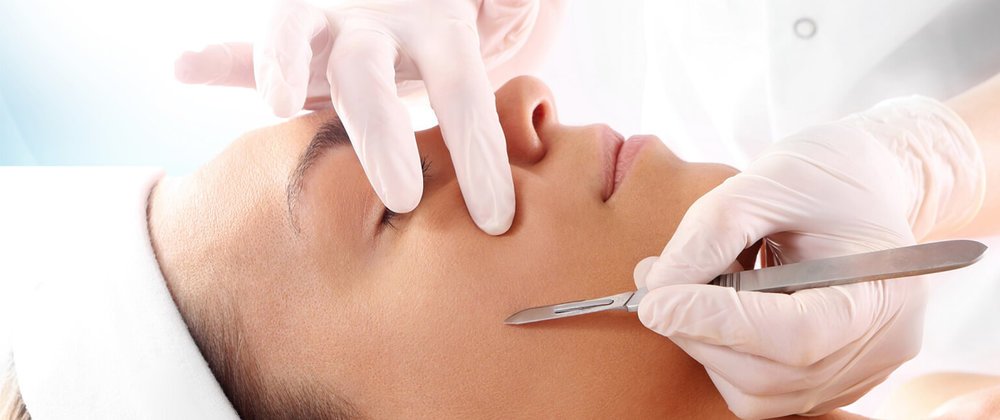Our Ultimate Guide to Injectable Wrinkle Fillers
Injectable wrinkle fillers are effective, minimally invasive aesthetic treatments that have been rapidly growing in popularity in recent years, both online and offline. Among beauty editors, Instagram influencers, and cosmetic specialists, these treatments are discussed at such a frequency that they are no longer shrouded in mystery as they once were. However, outside these circles, there might still be confusion over the different types of injectables, their benefits, and what exactly you need to know before getting each one.

Types of injectables, their benefits, and their side effects
Avanti Aesthetics has compiled some essential information to help you learn more about the types of injectables, their benefits, and their side effects. Each injectable is used to treat different conditions and achieve specific results, making them a truly diverse treatment. Your aesthetic specialist will advise you on the injectable best suited to you, giving you the best chance of reaching your unique goals. To learn more about the various types of injectables and the multiple benefits they offer, get in touch with Avanti Aesthetics today on +44 (0) 20 7096 1088 or at [email protected] to arrange your consultation at our London clinic.
Types of Wrinkle Fillers
There are three main types of injectable fillers, namely neuromodulators, injectable deoxycholic acid, and dermal fillers. Neuromodulators such as Botox and Jeuveau are used to weaken and paralyse the muscles of the face and reduce the appearance of wrinkles on the forehead and around the eyes.
Injectable deoxycholic acid, such as Kybella, uses a naturally occurring acid to dissolve small quantities of fat under the chin.
Dermal fillers sit under the skin to provide support and improve the volume of multiple areas of the face. The most common types of dermal fillers include:
1. Hyaluronic Acid
Hyaluronic acid injections are a popular type of dermal filler used to improve the volume of the face and reduce depressions in the skin. It is made by extracting and reformulating a natural substance found in soft connective tissue, cartilage, and skin tissue, and can dramatically improve the appearance of:
|
|
2. Calcium Hydroxylapatite
Calcium hydroxylapatite is a mineral-like compound naturally found in human bones. It is biosynthetically produced and produces a natural result with limited side effects.
3. Polylactic Acid
Polylactic acid is a dermal filler that stimulates the body’s natural production of collagen. Because it works by stimulating collagen production, this type of dermal filler does not produce immediate results, with the full effects appearing gradually over a few months. Around three treatments are usually needed with this type of dermal filler to see the desired results, and occasional touch-ups may be required.
4. Polyalkylimide
Polyalkylimide is a semi-permanent dermal filler that has a minimal reaction with human tissue. Following the injection, a thin layer of collagen will slowly form around the gel, eventually completely surrounding the gel after around one month. It can also be removed if necessary.
5. Polymethyl-Methacrylate Microspheres
Polymethyl-Methacrylate Microspheres (PMMA) is a semi-permanent filler used to treat medium-to-deep wrinkles, fill out scars, and augment thin lips. Previously used as part of permanent surgical implants, PMMA is used instead of collagen or hyaluronic acid when permanent solutions to facial wrinkles are required. It can take up to three months to see the full effects of a PMMA injection and involves threading or tunnelling methods to ensure proper results.
What Are Injectables Used For?
Dermal fillers are most commonly used on the facial area, where they can visibly reduce the appearance of fine lines and wrinkles, and add volume to your face. They can also be used to conceal scars and augment other areas of the body.
The Facial Area
Dermal fillers are commonly used on different areas of the face to smooth and fill out the wrinkles that naturally occur as we age. These facial areas include:
- Nasolabial folds (fine lines running from the nose to the lips).
- Marionette lines (vertical lines running from the lips to the chin).
- Smile lines.
- The tear trough and lower eyelid.
- Between the eyebrows.
A few of the most common facial issues dermal fillers can address include:
- Improve the appearance of symmetry in the face.
- Enhance and restore volume to sunken cheeks and temples.
- Smooth out the chin.
- Reduce the appearance of vertical lip lines.
- Plump up and enhance the appearance of the lips.
- Smooth out lines around the mouth and nose.
Other Uses
While they are mainly used to treat fine lines and wrinkles, cosmetic injectables are also ideal for a range of different uses. Some of these uses include reducing the appearance of acne scars, hand injections, buttock augmentation, smoothing out earlobes, and more.
The Benefits of Cosmetic Injectables
In addition to helping you achieve a youthful, rejuvenated appearance, wrinkle fillers also boast a wide variety of other benefits when compared to other facial aesthetic treatments. These benefits include:
Minimally Invasive
Injectables are a simple treatment that involves injecting a suitable solution under the skin. These treatments are usually performed without any form of an anesthetic; however, a numbing cream can be applied if necessary.
Quick Procedure
Since injectables require minimal preparation and little downtime, the procedure can usually be completed in under an hour. This allows for easier scheduling and faster appointments for patients.
Minimal Scarring
Choosing injectables is a fantastic way of avoiding the scarring associated with other surgeries and procedures. Injectables only produce incisions the size of a pinprick, which means they produce no scarring whatsoever.
Little to No Downtime
Many other facial treatments, including facelifts and chemical peels, require substantial downtime to let your face heal. By contrast, injectables require no recovery time and allow you to leave the clinic and get back to your usual routine right away.
Virtually Instant Results
The results of injectables are usually visible almost immediately following treatment. Some swelling and bruising may occur; however, these typically subside within 24 hours, allowing you to enjoy your revitalised appearance almost instantly.
Cost-Effective Treatments
While the results are temporary, injectable treatments are significantly more affordable than other facial treatments. These treatments can also be spaced out evenly, allowing you to cover the costs of the procedure without significant impact on your finances.
Side Effects and Risks
While some reactions, such as swelling, tenderness, redness, and itching are normal following a dermal filler injection, it is essential to understand the potential side-effects involved with injectables.
The mild reactions commonly occur immediately after the procedure, and will usually disappear after a few days. Severe complications from dermal fillers are uncommon; however, some potential risks can include:
- Excessive bruising and bleeding.
- Acne-like skin eruptions.
- Infections.
- Damage to the skin resulting in a wound and potential scarring.
- Skin necrosis.
- Asymmetry.
- Blindness.
- Localised or severe allergic reactions.
Risks vary depending on the specific dermal filler used, and these side-effects, as well as any other potential hazards, will be thoroughly discussed with you during your consultation before any treatment. All treatments will only be performed with your full consent.
